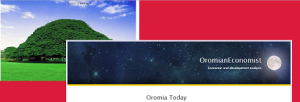Sweet labour: From H&M to Calvin Klein, brands look to Ethiopian factories where pay is as low as $21 a month and no minimum wage July 22, 2015
Posted by OromianEconomist in H & M.Tags: From H&M to Calvin Klein brands look to Ethiopian factories with pay as low as $21 a month, sweet labour
add a comment
“Ethiopia’s garment sector has no minimum wage, compared with Bangladesh, where workers earn at least $67 a month, according to the International Labor Organization. Garment workers in Ethiopia started at about $21 a month as of last year, the Ethiopian government said.”
From H&M to Calvin Klein brands look to Ethiopian factories with pay as low as $21 a month
Africa is one of the few places where it is possible to go from fiber to factory in one place and Ethiopia holds the maximum promise for garment retail, being a top sourcing destination for apparel companies with $70 billion of goods procured annually.
“Africa is a huge opportunity to demonstrate how the industry can work together,” said Colin Browne, managing director of product supply and Asian sourcing for VF Corp., which owns such brands as Lee, Wrangler and Timberland.
He pointed out to the factory owners a key advantage in Africa: it is one of the few places where it’s possible to go from fiber to factory in one place.
Africa is the final frontier in the global rag trade – the last untapped continent with cheap and plentiful labor. Ethiopia’s garment sector has no minimum wage, compared with Bangladesh, where workers earn at least $67 a month, according to the International Labor Organization. Garment workers in Ethiopia started at about $21 a month as of last year, the Ethiopian government said.
Most countries in Africa benefit from a free-trade agreement with the US, an arrangement that saves retailers money and ensures that many African countries can grow their own cotton, which shortens production time.
Asia has dominated clothing manufacturing, churning out cheap clothes on inexpensive labor that are shipped to malls world-wide. But, over the past few years, rising production costs in China and several deadly factory accidents have forced apparel companies to hunt for alternatives from Myanmar to Colombia to Ethiopia.
Ethiopia was recently identified as a top sourcing destination by apparel companies, according to McKinsey & Co, which surveyed executives responsible for procuring $70 billion of goods annually – the first time an African country was mentioned alongside Bangladesh, Vietnam and Myanmar.
Whether or not Africa’s role as a supplier expands, these efforts show the lengths to which big apparel makers are willing to go to find new, low-cost sources of production. Overall, consumers have become conditioned to expect a plentiful supply of cheap clothing.
“In the global economy, light manufacturing is constantly moving,” said World Bank’s Guang Z. Chen, who was the country director for Ethiopia until last month and is now a director for several countries across southern Africa. “We see a distinct possibility of this kind of industry moving away from Asia, because labor costs are rising in China rapidly.”
Ethiopia holds the most promise for developing garment production in Africa, factory owners and brands say.
“Ethiopia seems to be the best location from a government, labor and power point of view,” says M. Raghuraman, chief executive for corporate marketing and branding at Brandix Lanka Ltd., Sri Lanka’s largest clothing exporter, which is interested in Africa’s garment potential.
At the MAA Garment & Textile Factory in Northern Ethiopia, 1,600 workers spin cotton, dye fabric and sew it into T- shirts, leggings and other basics for international retailers like Hennes & Maurtiz, AB’s H&M chain, Tesco PLC, Asda Stores Ltd’s George label, and German clothing company Kik Textilien und Non-Food GmbH.
“Investors are coming here from Sri Lanka, Bangladesh, China, India and Turkey,” said Fassil Tadesse, chief executive of MAA’s parent company, Kebire Enterprises, and president of the Ethiopian Textile and Garment Manufacturers Association.
So far, Africa barely registers in the field of garment manufacturing. And, it will take years for any other country to seriously challenge China.
Many African countries lack roads to transport finished clothing, and landlocked Ethiopia doesn’t have a port. The workforce is untrained in sewing clothes. All of sub-Saharan Africa accounts for less than 1% of global clothing exports.
Some apparel companies remain interested despite those hurdles. They are drawn to the cheap labor and to the inexpensive power, which in many countries is the second-biggest factory cost after workers. The Ethiopian government is building a railway to the port in neighboring Djibouti to help exports leave the country more quickly.
Read more at:-






You must be logged in to post a comment.